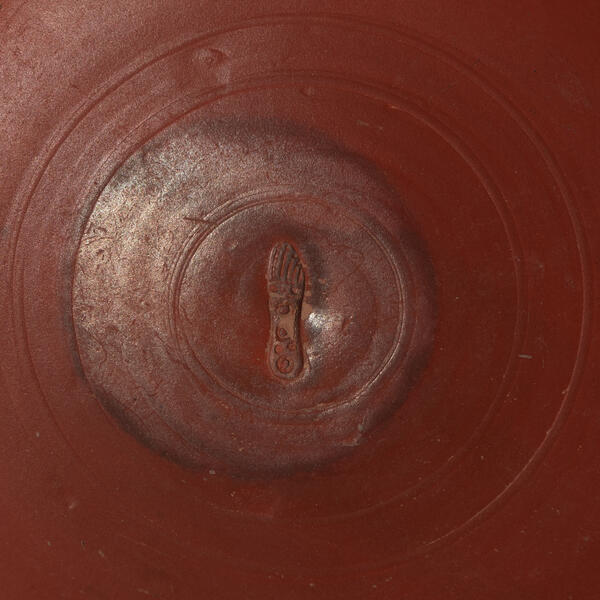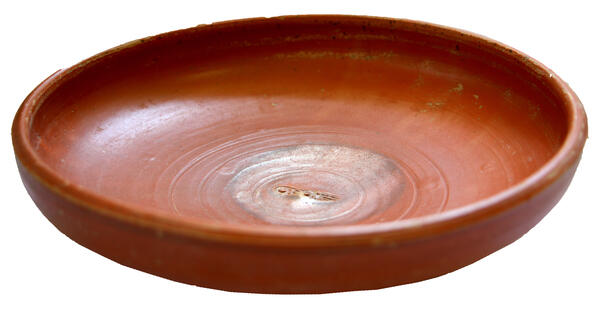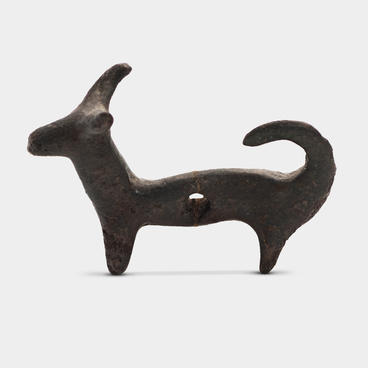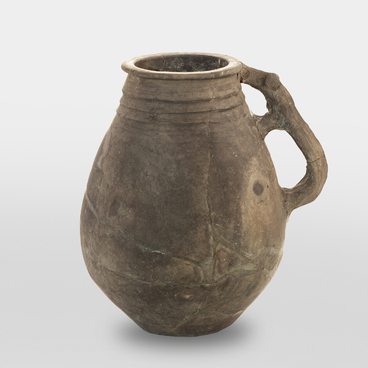The Tanais Archaeological Museum-Reserve displays a deep plate, discovered in 1990 during archaeological excavations at one of the burials in the Tanais region. The plate, which is slightly concave at the bottom, features a stamp in the shape of a foot — planta pedis — surrounded by an annular groove and four concentric relief circles. The orange lacquer is of good quality. It covers the entire inside and outside surfaces of the plate, except for the bottom. This type of plate would have been used as tableware.
It is believed that such ceramic objects were only used during special events. A significant part of the plates with a vertical side was produced in the Black Sea Region. Planta pedis stamps were mostly typical of Pontic Sigillata pottery. Pontic Sigillata was the dominant type of tableware in the Northern Black Sea Region until the middle of the 3rd century CE. Archaeologists have not yet identified its production centers. Perhaps it was a group of cities with advanced ceramic production. This is the only explanation for the fact that such centers supplied their products to almost the entire Northern Black Sea Region.
Ceramic products have been around for several millennia. The invention of the potter’s wheel allowed for the production of high-quality clay vessels. Over time, various methods of decorating ceramic products were developed. One of them was coating the vessel with colored lacquer — a special solution of black, red, white, and other pigments. During the early centuries of the common era, the most common and widespread style of pottery was red lacquerware. In addition to the lacquer coating, many vessels, mostly produced in the 1st century CE, were also decorated with the planta pedis stamp. It consisted of incisions arranged in circles or spirals, with a footprint (or Roman sandal) in the center. This stamp originally had an apotropaic magical function, but later became a decorative element.



